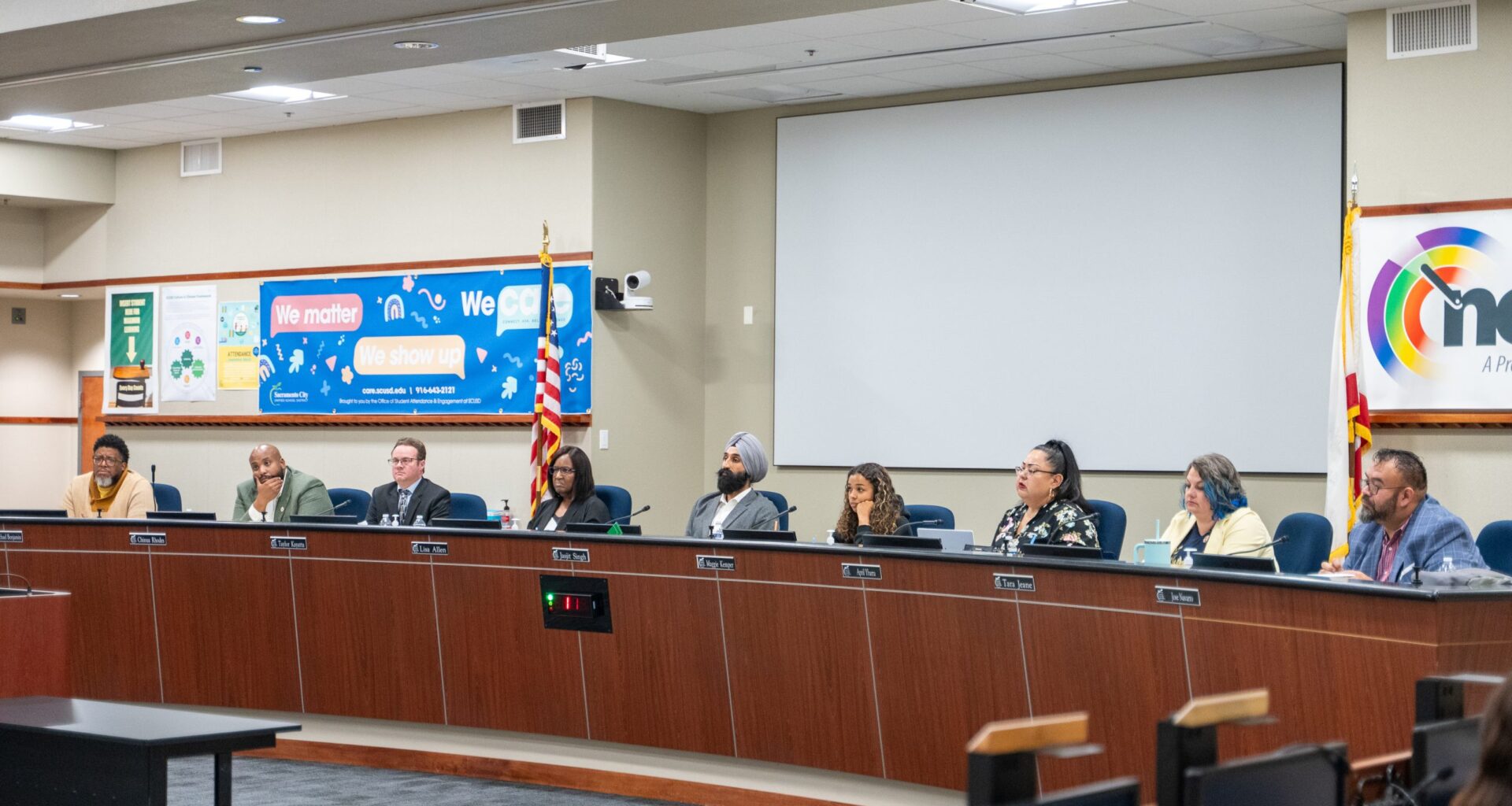The Sacramento City Unified School District announced at its Sept. 13 meeting that it had spent $43 million more than previously budgeted during the 2024-25 school year.
The district attributed the deficit due to unforeseen year-end payments for salaries, books and supplies, contracts, special education and maintenance.
During the report, Janea Marking, the district’s chief business and operations officer, said projections show Sac Unified will fall below the state-required 2% reserve in the current school year, as well as 2026-27 and 2027-28. As a result, the district will be at risk of intervention by the Sacramento County Office of Education and could lose budget authority and face possible program reductions. Community members and district employees fear financial cuts.
Brian Heap, the district’s chief communications officer, said that while Sac Unified successfully returned to a positive budget certification in March and its 2025-26 adopted budget was approved by the county, it was balanced on a very thin margin.
“The 2024-25 unaudited actuals revealed an unexpected $43 million deficit spend,” Heap said. “That fact, combined with anticipated costs associated with recently completed and ongoing labor partner negotiations, have created a critical financial challenge.”
To try and curb some of these issues now, the district on Oct. 1 began a spending pause that includes non-classroom hiring, new contracts, travel, non-classroom supplies and nonemergency overtime, among others.
“Those measures alone will not fix our problems,” Heap said. “There will be many other budgetary sacrifices to make in the coming months to get the district back on a path to solvency before the end of the fiscal year. In reaching that goal, it is our every intention to avoid major disruption to student opportunities, programs, and the day-to-day educational experience at SCUSD.”
Nikki Davis-Milevsky, president of the Sacramento City Teachers Association, said they were surprised to learn of the fiscal situation.
“We’re going to advocate for things to be cut as far from the classroom as possible, and there are significant savings that can be found without impacting our schools or the services that kids are receiving,” she said.
Milevsky said the teachers association also expects the district to hold people accountable. She said some contracts involving special education were not properly reported to the business office.
She said the district can start adjusting the budget by making cuts to administration.
“We’ve been advocating for the district to make administrative cuts for quite some time,” Milevsky said. “They really needed a right-size district administration last year. They didn’t, and so we have less flexibility this year.”
Milevsky said that so far, the district has not said if layoffs would start for certificated, classified or administrative staff.
Carl Pinkston, co-founder of the community-based Black Parallel School Board, said he was also surprised at the budget shortfalls. He often checks the district’s budget as part of his work at the BPSB.
He said the situation results from significant federal funding cuts and a projected shortfall in state funding.
Pinkston also said the district faced an additional $102 million in expenses when staff gained a 14% salary increase after they went on strike. In addition, he pointed to a 51% increase in total subcontracted expenses and other contracts that may not have been authorized, resulting in $20 million more in spending.
He worries that as the district works to reallocate its budget, it will primarily impact and hurt marginalized communities, but especially those who are Black, brown, and have disabilities.
He fears potential school closures, a reduction in qualified teachers, and that the district will try to cut social workers, instructional aides, additional support for students, and professional development for teachers.
“It’s the failure of the district in the past to address these issues [that] will create a crisis and an increase in the number of students that are going to be pushed out, which ultimately creates the school-to-prison pipeline,” Pinkston said.
Related

